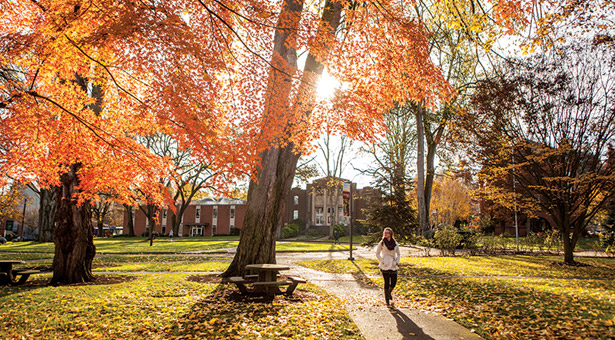President's View Engaging the Culture, Changing the World
The Seeds of SPU’s Future
Strategic Planning Requires Cultivating Rich Institutional Soil
By Daniel J. Martin, President

Most of us have heard the Parable of the Sower found in the Synoptic Gospels (Matthew, Mark, and Luke). In the parable, seeds fall on a path, on rocky ground, among thorns, and on good earth. Of course, the seed sown in the first three soil types does not produce, while the seed that falls on the good earth produces a rich harvest.
In higher education, we sow seeds of knowledge, seeds that nurture the mind and soul, seeds of hope, and seeds of possibilities. Although the field of higher education is very different from the fields that produce agricultural crops, some concepts are applicable to both.
For seeds to flourish in higher education, they must be sown in rich soil — good earth. This certainly speaks to a student’s receptivity and desire to learn and grow intellectually, spiritually, socially, and physically.
However, it also speaks to our institutional “soil.” How are we stewarding and using the resources we have been blessed with as a university? How are we honoring the rich legacy and tradition of excellence that has become synonymous with Seattle Pacific University since 1891? How is the SPU experience being nurtured, developed, and resourced to provide the bestopportunity for fulfilling our mission and advancing our vision?
Since last February, the campus community has been engaged in a dynamic strategic planning process designed to answer these questions — and lay out the path toward rich and sustaining soil that will enable us to fulfill our mission and solidify our future as one of the nation’s leading Christian universities.
One of my favorite quotes from researcher Jim Collins (author of Good to Great and other books) is, “A culture of discipline is not a principle of business; it is a principle of greatness.” Discipline is one of the most challenging aspects of any strategic planning process. It is the nuts and bolts: processes, procedures, prioritization, budgeting, and tough decisions. These aren’t the “feel-good” areas of leadership. However, these are the “must-do” areas if a strategic plan is to actually be implemented and take root. The fun part of strategic planning is dreaming about greatness; the hard part is taking the steps to achieve it.
Creating and sustaining rich soil is difficult. The comprehensive strategic planning process we are undertaking will not only allow us to identify what we believe are the critical elements for rich soil, but will also enable us to pursue our future with resolute focus and mission alignment.
We are at the midpoint in our strategic planning process. Since last February, there have been
focus groups, planning sessions, and conversations held online and in person with hundreds of
faculty, staff, students, alumni, retired faculty and staff, community members, and the Board
of Trustees. The process began with affirming our mission, values, and beliefs in order to establish
a foundation upon which to creatively imagine and define a shared vision for SPU’s future.
“The fun part of strategic planning is dreaming about greatness; the hard part is taking steps to achieve it.”
At present, by almost any industry standard — quantitatively or qualitatively — SPU is recognized as a great university. However, the University dare not rest on its laurels. We have been an institution built on faith and vision, and we must continue to set our sights high. We will pursue a vision that will challenge us, stretch us — one that is worthy of our past and reflective of our purpose.
As we envision a new future together, five core emphases will frame our thoughts and planning:
- Academic excellence and relevance
- Transformative and holistic student experience
- Vital Christian identity and purpose
- Resource development and attainment
- Operational effectiveness and efficiency
These emphases aren’t unique to Seattle Pacific — but when combined with our institutional values, beliefs, and mission, the strategic vision and plan we will create and pursue together will bear SPU’s unique stamp.
We will continue to provide updates in Response as we mark key points in the process. The first stage is to be completed this fall as the Board of Trustees receives the first draft of the plan that will identify our initial objectives for achieving the five goals noted above.
Toward that end, I would like to engage you, the Response reader. As a way to focus our discussions, I’ve asked each campus group to complete this sentence:
“I would be energized if I knew [blank] was in SPU’s future.”
So what would your answers be? What dreams or aspirations do you have for Seattle Pacific University? If you have ideas or comments, I would love to incorporate them into the responses I have received from the campus community.
The success of our strategic planning process at Seattle Pacific depends on hearing from as many of you who care about this University as possible. I hope you’ll take this opportunity to join us in envisioning the future of SPU, and helping to prepare rich institutional soil in which the seeds of our vision will flourish.
